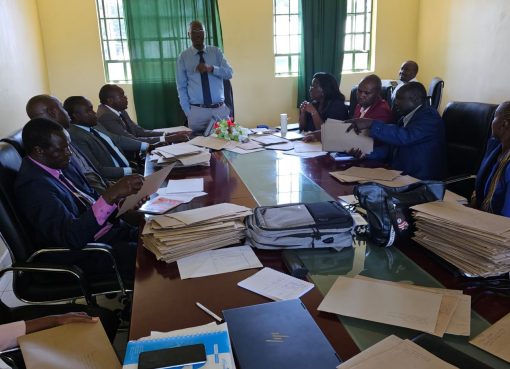The government has drafted a policy which seeks to revitalize and bolster the leather industry’s overall performance to achieve its full potential and drive manufacturing in the country.
Ministry of Agriculture, Livestock, Fisheries and Cooperatives Cabinet Secretary (CS) Peter Munya said that the policy would help the country’s deliverables to the realization of the Vision 2030 and the Big4 agenda.
In a speech read on his behalf by the ministry’s Chief Administrative Secretary (CAS) Lawrence Omuhaka at the Kenya Institute of Curriculum Development (KICD) during the Kenya leather development policy validation workshop, Munya said that the key objective of the policy is to increase Kenya’s market share in the global leather industry.
Munya highlighted that the leather sector played a major role in the global economy, with an estimated global trade value of approximately $100 billion per year. This is said to be greater than the combined global value of meat, sugar, coffee and tea with this global trade value projected to grow to over $500 billion per year by 2027.
“The scope of this policy is wide. Its successful implementation will require commitment from all stakeholders, both public and private. The interventions will in many instances involve a paradigm shift in the industry dynamics, which will require strategic management,” said Munya.
The CS said that the government has fully invested in the fulfillment of its obligations envisaged in the policy, through its Ministries, Departments and Agencies (MDAs).
“The leather sector in Kenya is estimated to be worth over Sh50 billion annually. Unfortunately, over 90 per cent of Kenya’s $94 million -Sh9.4 billion- leather exports are unfinished wet blue leather, whereas, further processing to finished leather and manufacture of leather products could create at least 50,000 more jobs and an additional $150-250 million -Sh15-25 billion- to the Gross Domestic Product (GDP),” said Munya.
The CS observed that according to the Leather Value Chain Investment Profile, Kenya contributes to only 3.5 per cent of leather production on the African continent, despite having the third-biggest livestock resource in Africa.
“This policy provides a roadmap for the growth and development of the industry which has been negatively impacted by the liberalization policies of the 1990s. Other challenges facing the industry include the downturn in the global economy and most recently the devastating impact of the Covid-19 pandemic. This has unfortunately affected the performance of the industry,” said Munya.
He disclosed that the country’s aim is to drive the transformation of the leather value chain from a raw material and semi-processed, export-driven sector to an internationally competitive finished leather and leather products manufacturing industry.
To achieve this, Munya said that there is need to have a supportive legal and policy framework. Therefore, this policy shall address the challenges facing the industry, by stipulating various interventions.
“The Policy statements describes how these goals will be achieved and it includes promotion of sustainable supply of quality hides and skins, production of competitive and quality finished leather and leather products, expansion of access to markets for finished leather and leather products, development of infrastructure to support the entire value chain, skills development, compliance with international environmental standards and best practices, promotion of innovation, technology acquisition and adoption; establish linkages between state and non-state actors, provide a conducive enabling legal and regulatory framework, ensure inclusivity of all Kenyans including special interest groups; and mitigation of external business risks,” said Munya.
Kenya Leather Development Council (KLDC) board Chairman Francis Munyoki said that the leather industry has the potential to drive the manufacturing agenda in the country which will create employment and bring in export earnings geared towards building the country’s economy and uplifting people’s livelihoods.
“This will move the country towards achieving Kenya’s vision 2030, the Big4 agenda and the United Nations (UN) 2030 Sustainable Development Goals,” said Munyoki.
By Joseph Ng’ang’a



